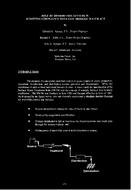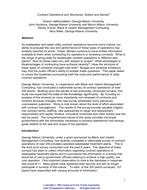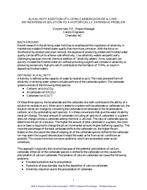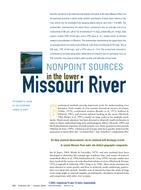Provide PDF Format
AWWA ACE95192
- Role of Distribution Systems in Achieving Compliance With Safe Drinking Water Act
- Conference Proceeding by American Water Works Association, 01/01/1995
- Publisher: AWWA
$12.00$24.00
The elements of a successful microbial control program consist of source protection, treatment, disinfection, and distribution system operation and maintenance. While the importance of each of these individual barriers is clear, it wasn't until the introduction of the Surface Water Treatment Rule (SWTR) that the concept of multiple barriers was formally established. The SWTR was finalized in June 1989 and became effective in June of 1993. As illustrated in this paper, this rule formally established a Multiple Barrier Concept for microbial control that includes: source protection to reduce the risks of bacteria and viruses; removal by coagulation and filtration; primary disinfection to kill or inactivate the microorganisms that might pass through the treatment plant; and maintenance or microbial control in the distribution system. To date the primary focus has been directed towards treatment and disinfection. More recently, however, source protection has begun to gain some attention while the role of distribution systems is still not receiving the same level of attention. With the upcoming Disinfectant/Disinfection By-Product (D/DBP) Rule we expect to see the production of very high quality water, produced in some cases by membrane filtration. However, in many cases this water will still be discharged into old/inadequate distribution systems. Some of these systems for example are over 100 years old with steel or cast iron piping and a large number of dead ends. Other have storage tanks that are locked out based on system energy grade line/hydraulics resulting in stagnant water and biofilm growth on the tanks' interior. Most of these systems were designed to accommodate fire flows and in some instances seasonal demands as a result may have oversized pipes and storage that is rarely used. What remains certain about these systems is that they were not designed with water quality in mind and little consideration has been given to what impacts on water quality they may have. This paper discusses the more stringent drinking water regulations and the water quality problems associated with antiquated or inefficient distribution systems. The authors offer several proactive solutions for dealing with these issues and point out some difficulties that may arise when dealing with these problems.
Related Products
AWWA WQTC69244
Alkalinity Addition Utilizing Carbon Dioxide and Lime: An Inexpensive Solution to a Historically Exp..
$12.00 $24.00





